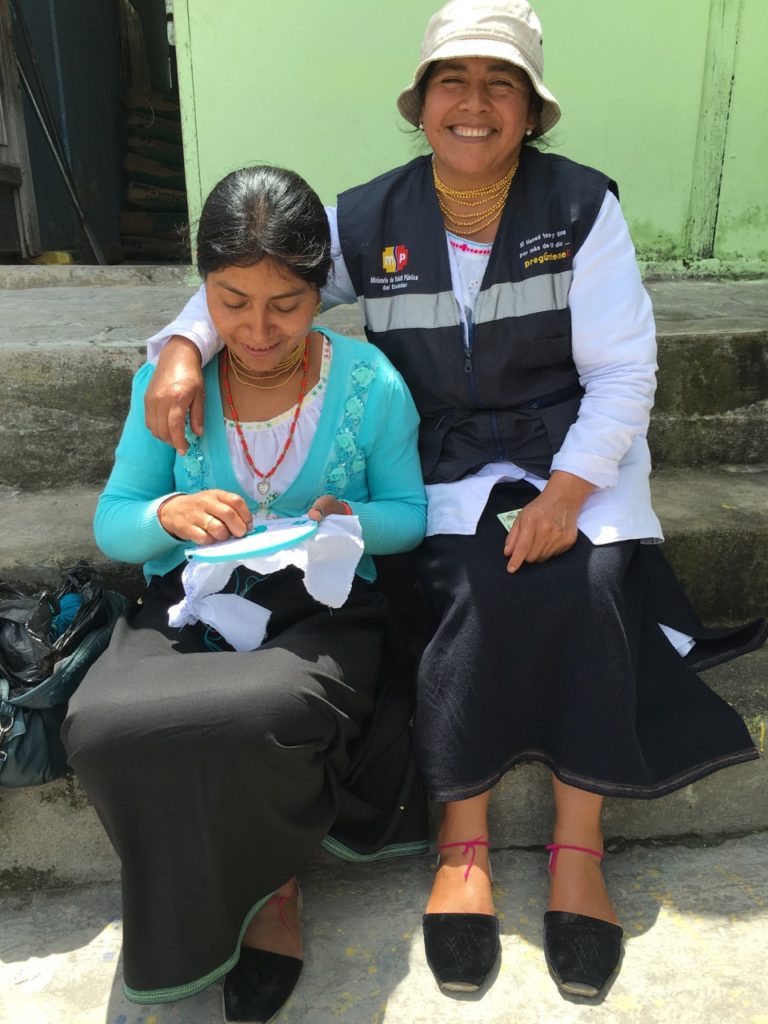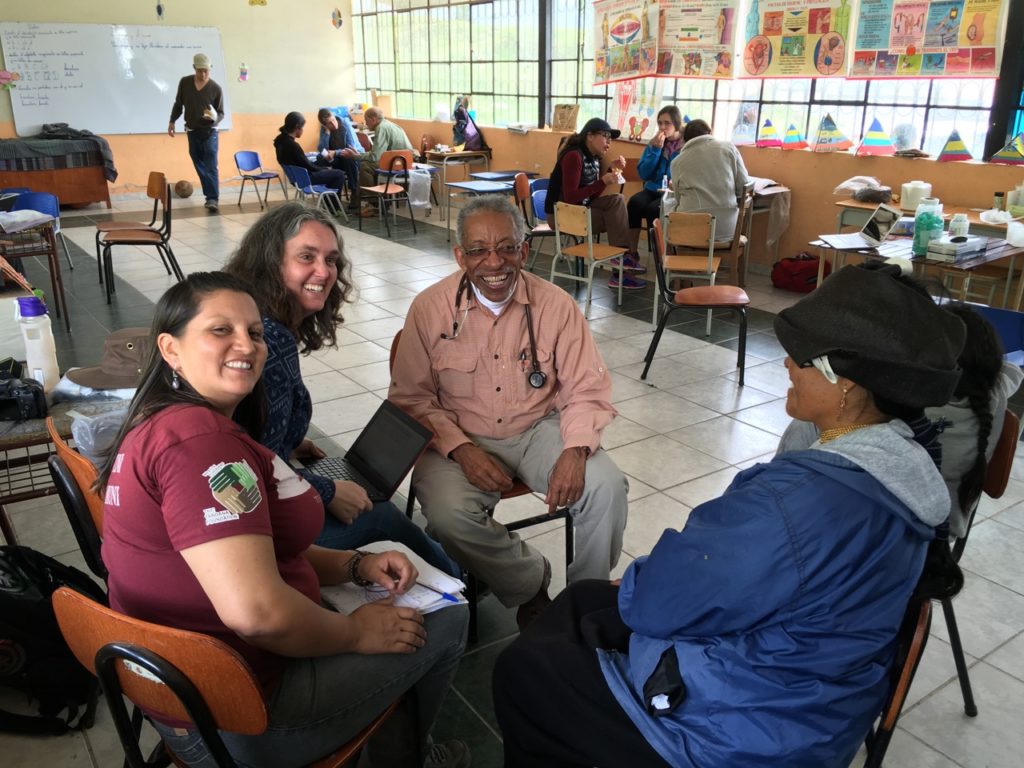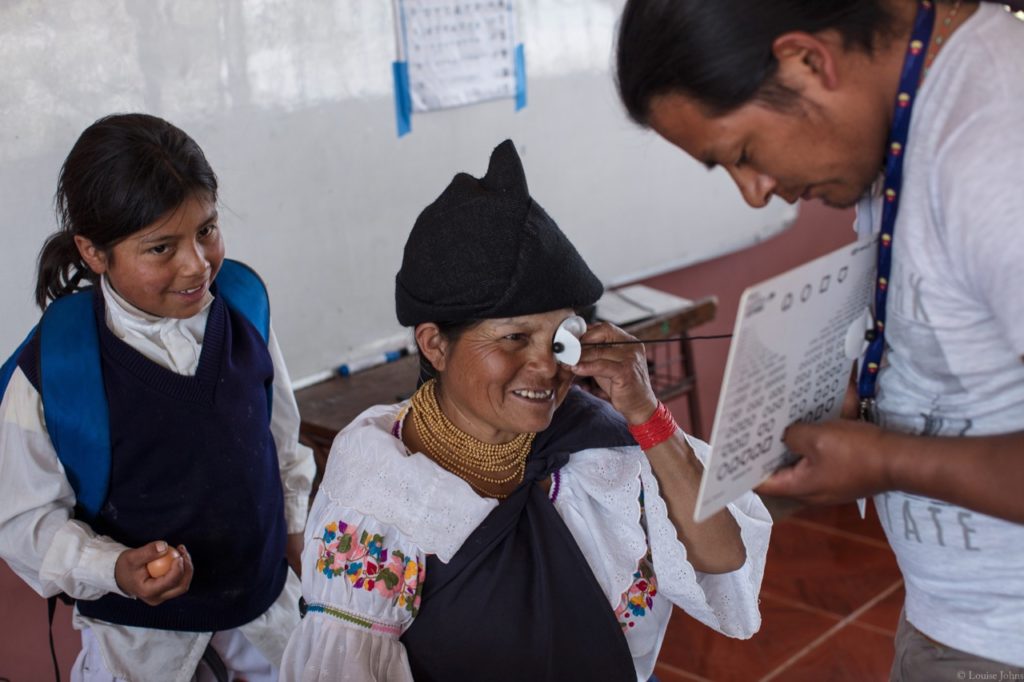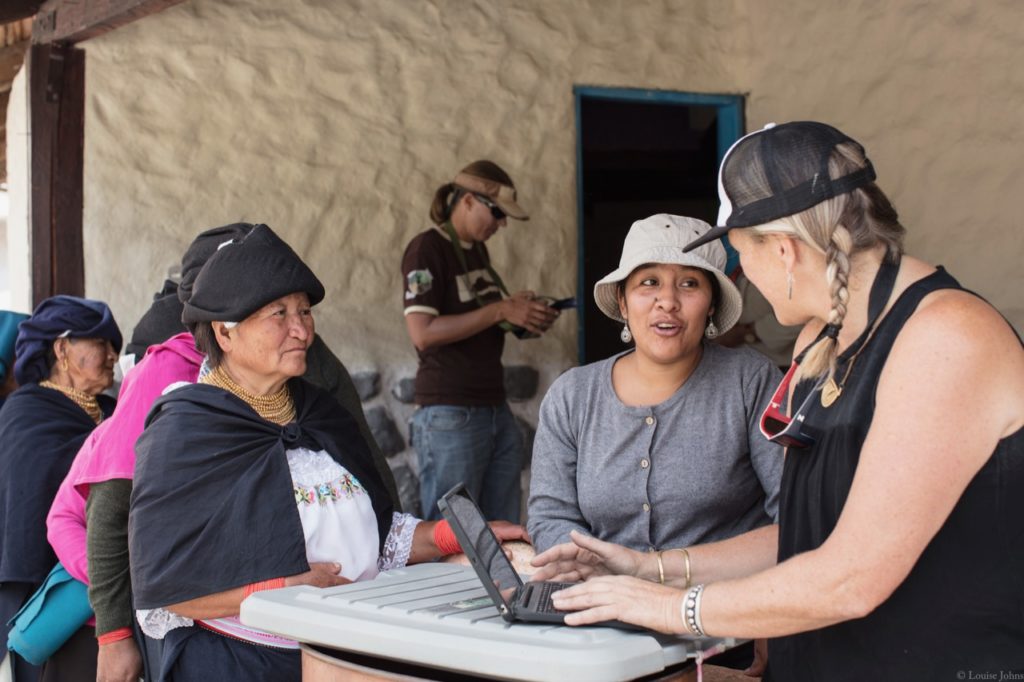Best practices case study — The Tandana Foundation in Ecuador
October 3, 2019 |
We asked Tandana Foundation for their thoughts on the Service Trip Audit Tool (STAT), a new semi-objective framework for assessing short-term medical missions.
The following reflects the opinions of Anna Taft, Founding Director for Tandana. It is not intended as an endorsement of either Tandana Foundation or their specific programs.
“Tandana is the only serious foundation that helps all the people in the communities, without lying to them. Others say they are going to help, to take us to good hospitals, and then they never return.”
– Marcela Muenala, patient, Tangali, Ecuador
These words indicate the importance of quality assurance, best practices, responsibility and respect in short-term medical volunteer programs. The Tandana Foundation developed our health program in response to requests from our partner communities in highland Ecuador. We began with strong community relationships but little knowledge of the issues surrounding the provision of health care in these communities. However, with thirteen years of experience, we have learned and improved a great deal. The eighteen consensus best practices outlined by the Service Trip Audit Tool (STAT) provide a useful framework for evaluating and improving the quality of such programs.

Sustainability
I believe that the Sustainability elements are the most important ones in the rubric. These best practices fit well within Tandana’s commitment to being responsible to our partner communities.
Initially, we did not have formal partnership with local health services or an effective referral process. We quickly realized their importance, however, and now collaborate with the Ministry of Health in rural health centers, hospitals, and provincial administrative levels.
We are also proud of our patient follow-up program, in which a permanent staff member supports patients in navigating the public health system and other local resources. She assists those who are referred through our mobile clinics in acquiring appointments and arranging transportation. In addition, she advocates for high-quality care, and helps patients learn what questions to ask and what procedures to follow. Through this lengthy process, patients learn to navigate their local resources in the event of future health concerns.
Our relationships with health centers allow us to ensure that a local doctor and primary care technicians from the Ministry of Health are part of our mobile team. These staff are mandated to conduct community visits but are not typically funded to do so. As a result, they are pleased to collaborate with us and take advantage of the additional resources we offer.

Education
Education, in my view, is the lowest priority area among the best practice elements. While our program scored a cumulative 4.7/5 on the STAT, the lost points reflect the absence of health education in a context where it has never been requested by locals.
For example, training for local health workers is not something our partner communities have requested. Our value of respect calls for us to honor community priorities and not impose initiatives that they do not want. We assessed whether a rural health center had any interest in working with us on a community health worker program. However, they felt that a program they already had in place for primary care technicians with community ties was sufficient.
Similarly, we support public health work through the local health centers. They have their own health education programs, and we support these programs if requested. Informally, reciprocal knowledge sharing between local and visiting providers certainly occurs during our programs, which is a better fit for our approach than formal training. This is valuable, since it is mutual and responsive to individual needs and expertise.
For example, I have often seen Dr. Peter Graves, a volunteer from Ontario, training local physicians to use our portable ultrasound machine. He explains his perspective:
“A doctor is a doctor, throughout the world. The difference is what we have to work with. I’ve learned a lot about how to do the best we can with what we have available. That means looking at the whole patient and not necessarily just one element. I think that’s something we can learn from other physicians and other health care providers.”
Preparedness
As I rated our program, I marked “not sure” for only one best practices element: volunteer screening. The binary nature of the scale made it difficult to know whether our screening processes are adequate.
Our predeparture training is conducted by sending information packages to volunteers, directing them to the training videos on the website followed by a full day of focused, in-person, training upon arrival. We believe that cultural sensitivity is critical and would have liked to have seen this made explicit in the STAT. One good example is respect for community goals, culture, and listening to the goals and feedback of community members themselves. Locals tell us that other medical teams have visited and refused to eat the community lunch. Such behaviour can be highly disrespectful in the local context.
The Tandana Foundation is now legally registered to operate in Ecuador through the Ministry of Health, a process that required approximately four years of diligence. We require volunteers to complete a detailed registration form and providers to have their licenses apostilled. Having a document apostilled makes it legal countries that have signed the Hague Convention. This is the process the Consulates of Ecuador in the United States have instructed us to follow to credential our volunteers, and bypasses much of the Ministry of Health bureaucracy.

Impact
Tandana has developed our own electronic medical records software. We set up a local WiFi network at each location, so each station can access and enter data in real time. This system also helps us facilitate the smooth transition of patients between the various stations. However, it is not integrated with the local health system, where records are quite disorganized. The patient follow-up coordinator prints out the pertinent information from our system and takes that on paper to the patient’s appointments.
Cost effectiveness
The concept of informing the public and potential volunteers of the costs to the host community of our medical volunteer programs was new to us. Since those costs are minimal and mostly optional, we had never considered listing them on our website. After seeing this element included in the framework of best practices, we have now done so.
Costs to the community are small. Most communities provide lunch to the visiting health care teams. We gratefully accept this lunch when it is offered, but we do not require it. Patients do need to give up a half day of work, school, or other activities in order to seek care at our mobile clinics. The communities each need to provide a building in which we can set up our clinics, and this workspace represents an in-kind local contribution. Often the location is an elementary school, and that location facilitates students’ participation in the checkups we provide. The community leadership councils are responsible for advertising the clinics ahead of time and preparing the space for our team’s arrival.

Conclusions
The Tandana Foundation prioritizes the requests of the Ministry of Health and our community partners. This approach has led to satisfied patients and health workers, including Maria Esther Manrrique, a nurse at one of the local health centers:
“Thanks to you, we have been able to go out to the farthest communities, with medical attention, vaccines, medications, dental care. The people are very grateful, and they all want the foundation to visit each community.”
Future directions for the STAT tool
Like any tool, the STAT is imperfect. For example, the binary nature limits the amount of information they provide and could lead to ambiguity in some cases. I also believe that it is essential to incorporate the voices of local health workers, patients, community leaders, and Ministry of Health personnel into the best practices framework.
We appreciate the time taken to reflect on the STAT tool, and look forward to integrating local voices into the framework. For more on the framework, see our published article here or the related blog summary here.
Register
Sign up for free to flag trips of interest and email organizations directly through our directory.
Comments
0 comments